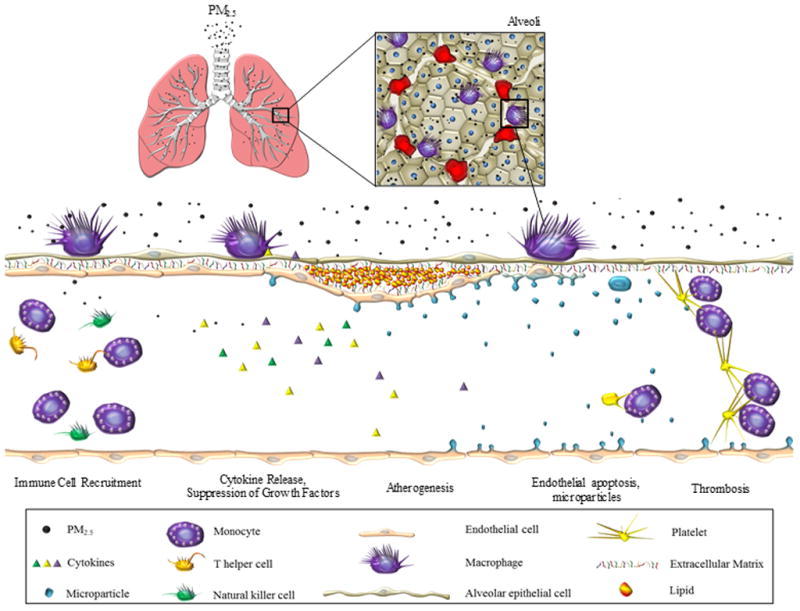Figure 4.

Schematic of the proposed mechanism by which PM2.5 induces vascular injury. Inhalation and deposition of PM2.5 in the lungs triggers inflammatory responses that lead to the release of inflammatory cytokines (TNFα, MCP-1 and IL-8); the recruitment of immune cells (CD14+ monocytes, CD16+ natural killer cells, CD4+ and CD8+ T cells); suppression of growth/angiogenic factors (EGF, CD40L, PDGF-AA, RANTES, GROα); and an increase in anti-angiogenic factors (TNFα and IP-10), resulting in endothelial cell apoptosis and the generation of endothelial microparticles in blood. These events are associated with an increase in circulating levels of soluble adhesion molecules (sICAM-1 and sVCAM-1) and platelet-monocyte aggregates. Collectively, these responses contribute to the pathogenic sequelae of atherogenesis and may increase thrombotic potential increasing risk of acute cardiovascular events.
